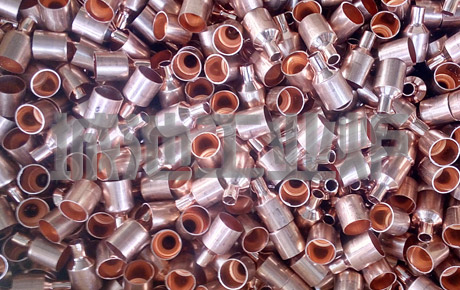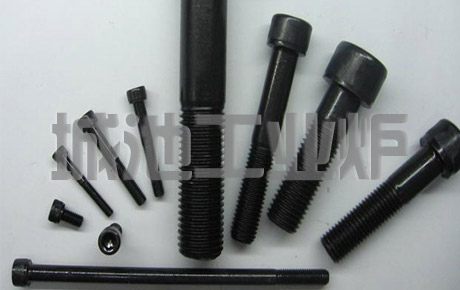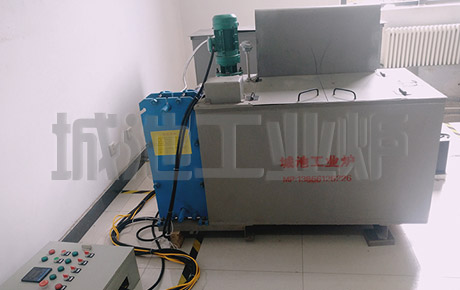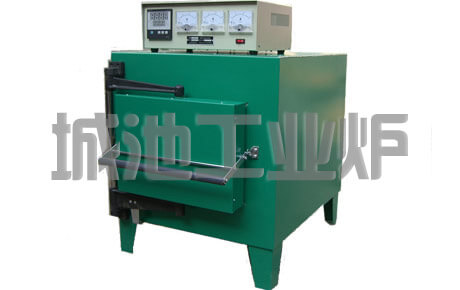Heat treatment temperature control instruments
Heat treatment temperature control instruments
Specializing city heat treatment equipment, electric furnace, industrial furnace temperature control instrumentation. Fuji brand FuJi, Yu electricity, Continental, RKC, OMRON Omron ,, God Kong Island electricity, Yamatake, WEST, conduction,
Abstract
- Promulgator: :industrial furnace
- Send date:2015-10-31 15:18
Keywords:Control device,automation,heat treatment,industrial furnace t
Heat treatment temperature control instruments
Specializing city heat treatment equipment, electric furnace, industrial furnace temperature control instrumentation. Fuji brand FuJi, Yu electricity, Continental, RKC, OMRON Omron ,, God Kong Island electricity, Yamatake, WEST, conduction, conductivity, chemical, Panduit, Yangming, Taiwan instrument ,, Delta, Honywell, Rainbow Run Yatai, Yuyao.
Temperature control instruments referred to temperature controller, thermostat (Thermostat), according to temperature changes in the work environment, physical deformation occurs inside the switch, resulting in some of the special effects turned on or off to produce a series of automatic control components operation, or electronic components at different temperatures, different principles of working conditions to provide temperature data to the circuit in order to supply the road collecting temperature data.
Temperature control is ideal when the target temperature change (change the set start value, when the power is turned on), the control temperature may faithfully track. In reality, since the control object temperature detecting section, an operation section, etc. have a time delay, so that the control section of the delay return temperature correction action. Thus, a "overshoot," "undershoot" phenomenon. If in order to obtain good control results, the gain control operation (response) decreases, the time to reach the target temperature becomes longer, or oscillation not cut down, or even larger.
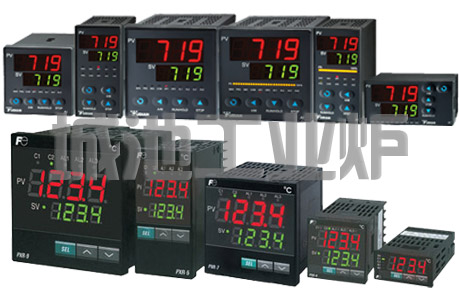
Kind of control action
● two-position operation (switching operation)
Electric heater or iron temperature control is carried out off control, that is, if the actual temperature is higher than the set value of another job off (OFF) electric wire power, if lower than the set value is switched on (ON) electric wire power supply. Like this for the set temperature, the temperature measurement based on high and low OFF / ON on the control position called the second action or switch (OFF / ON) action.
Simple control, the disadvantage is oscillation.
● proportional action (P action)
Operation amount proportional to the size of the output and the set value and the measured value of deviation control.
To set the value of the center is set proportional band, once the measured temperature into the proportional band, to gradually reduce the amount of operation.
The temperature within the proportional band to find a balance to stabilize, but the measured value with the set value rarely consistent.
Set temperature and a stable temperature deviation is called residual bias.
● integral action (I action)
Control with proportional action occurs residual bias. Eliminate the residual deviation integral action (I action).
Integral action is the output deviation (set value and the measured value difference) in size and time deviation occurs enclosed area, namely the size of the proportional and integral values.
In view of this, as long as there is deviation, the integral action to eliminate bias in order to function, and thus eliminate the residual deviation.
The strength of the integral action is represented by the integration time. Integral action generated output (operation amount) and the output of the proportional action item (operation amount) is equal to the elapsed time is called the integration time.
The shorter the integration time, the effect of the stronger points. The longer the integration time, the effect of the weaker points.
If the integral effect is too strong, prone to oscillations, instability.
● Derivative action (D action)
Following the occurrence of the deviation (setpoint and measured value difference) speed is proportional to the amount of operation can be controlled to prevent the deviation becomes larger than the first place of action is called derivative action (D action).
The strength of the derivative action is indicated by the differential time. Derivative time Derivative action output generated output (operation amount) and proportional action generated (operation amount) is equal to the elapsed time is called derivative time.
The longer the derivation time, the differential effect is stronger. The shorter the time differential, differential effect weaker.
If the differential effect is too strong, even a small change in bias, but also big change in output, oscillation occurs, and unstable.
● PID action
PID action is the proportional action, integral action, derivative action combination.
No action can be obtained with a ratio of oscillation stability control results, with integral action to eliminate the residual deviation, ameliorate the effects of external disturbance with derivative action.
Applies to inactive time big overshoot (overshoot on) big occasions.
Kind of control action
● positive action and reverse action
Positive action is when the actual temperature is higher than the set value of the occasion, to increase the operating capacity.
Positive action for cooling control.
Reverse action is when the actual temperature is lower than the set value of the occasion, to increase the operating capacity.
Reverse action for heating control.
● heating and cooling control
Control heating and cooling control points.
1 station by going to the temperature controller can output two operating amount of heating and cooling.
● Position proportional control
In using a controllable motor control, the opening degree (position resistance feet) input controlled motor, the output control signal. Also available in the corresponding "without resistance scale" controlled motor temperature controller.
● cascade control
For those who want to control the temperature of the portion between the heat source and there is a greater time delay object is valid.
The first controller (master) control output as a secondary controller (slave) remote setting input.
Secondary controller uses a control output of the controller setpoint temperature side correction, while the temperature control heat source.
● Manual control
Not by the controller for automatic control, but allows the operator to manually control the output changes.
When starting for the process control, commissioning and so on.
● PV bias
Measurement bias input coupled with PV set in, correcting measuring input.
Each sensor for correcting uneven deviation or other instruments of the measured values of deviation of the occasion.
Example: Measure the temperature when two identical temperature measurement points, the displayed value
Temperature controller A: 200 ℃
Temperature controller B: 198 ℃
If you set the temperature control device B PV bias is + 2 ℃, the displayed value:
Display value = measured value + PV bias value
= 198 ℃ + 2 ℃ = 200 ℃.
● Digital Filter
Input for reducing clutter. Equivalent to a delay of CR low-pass filter.
The time constant of the filter will be set according to the characteristics of the control object and clutter level, it can suppress the influence of input clutter.
If the time constant is too small, the filtering effect is not obtained. If the time constant is too large, the response is deteriorated.
● cold junction temperature compensation circuit
According to the terminals and thermocouple temperature meter measuring points difference generated corresponding thermal electromotive force.
The temperature of the terminal portion of the instrument is to set the room temperature, it produces only equivalent instrument terminals and the temperature difference between the measuring point of the thermal electromotive force.
Cold junction temperature compensation circuit is detected at room temperature, the thermal emf plus room part to compensate, making the thermal electromotive force corresponding to the measuring point temperature.
● square root calculation
In the case of flow measurement, the use of differential pressure flow meter, generally the output signal Δ, P (pressure) and flow rate (Q) has the following relationship:
Q = α√ Δ P
Because some may be the output signal from the flow meter Δ, P square you can find the opening flow (Q).
● removal PV low input
Opening square calculus occasion, enter small, even if the magnitude of the differential pressure change is small, will lead to substantial changes in the measured flow rate, due to input noise or cause instability. To prevent such problems, the part of the measurement of Δ P1 count below zero function.
● Setting limiter
Limiting setpoint setting range of functions.
● Setting change rate limiter
A setting change of the amount of change per unit time setting function when the setting value.
For changing the setpoint do not want a drastic change in the output of the occasion, or for simple process control applications.
● Multi-function storage area
Pre-set value (SV), PID constants, alarm setpoint, proportional band (P), integral time (I), derivative time (D) and other parameters group login function on the number of memory.
The number of groups can be registered parameter number called a memory, can log on occasion called 8 8 group memory.
According to need to adjust the corresponding memory (area) is used to control.
You can simplify the cumbersome setting change.
● remote setting
Set value (SV) set by analog signal from the outside.
· RS ratio
For remote setpoint multiplied by the magnification function.
· RS bias value
For remote setpoint value offset set value RS plus (minus) to get.
Related control
● Agile PID control
PID control is achieved by setting P (proportional band), integral time (I), derivative time (D) of each constant, want a stable control result, are now widely used. However, the disadvantage of this PID control are:
If in order to make "the corresponding response set" a good set each PID constant, the "corresponding to external disturbance response" bad; on the contrary, if in order to make "corresponding to external disturbance response" good and set each PID constant, "correspondence in response to external chaos "deteriorated.
Agile PID control, PID parameters base in making "chaos outside the corresponding response" well set on, you can "set the corresponding response" from the three shapes Fast, Medium, Slow Select.
These three kinds of shapes called in response to the control response parameters. If you pay attention to the response speed is selected from "Fast", if for no overshoot (overshoot) is selected from the "Slow".
● automatic calculation (AT)
Automatic calculation (AT) for the calculation set temperature is automatically set optimum PID constants function.
Automatic calculation can be raised from the input power source, any state control stable start.
● AT bias
AT bias is carried occasion measured values (PV) does not exceed the set value (SV) of the automatic calculation of settings.
AT bias if once set, you can change the automatic calculation of the set value (SV) ie [AT Point].
● control state judging self-calculus
When it is judged AIDS control already chaotic situation, self-calculus function works.
In the normal control does not exercise self-calculus, the temperature must be a consideration of the trust and stability.
● RFB (Reset Feed Back) limiter
The measured value (PV) and set value (SV) deviations long lasting occasions, PID calculation results are beyond the effective range of operation amount (0 to 100%). Output value in particular integral (I) greatly exceeds the need, even if the deviation is smaller, introduction of an amendment action is also slow.
RFB limiter when the PID calculation result exceeds the limiting points (100%) of the case, in order to make PID calculation results are often within the effective range of the excess is the integral value of the feedback, so that calculation results are held in clipping point be correction operation.
● arw (Anti Reset Windup)
PID control of the situation, it makes the integral (I) action to function, it would have a great time if you start on the rush from the control object.
ARW is by limiting the integral action (I) effective range overshoot suppression function. Integral action can only play a role in removing residual deviation, the integral action is reduced in proportion with the scope of work within, can suppress the overshoot minimum.
About alerts
● Deviation Alert
Deviation [measured value (PV) - set value (SV)] reached when the alarm is set to alert state.
Mobile alarm setpoint changes accompanying the set value.
● input value alarm
When the measured value (PV) reaches the alarm is set to alert state.
● Setpoint alert
Set value (SV) reaches the alarm state when the alarm is set.
● alert actions gap
When the measured value (PV) in the vicinity of the alarm set value, due to the drift of the input value and so can sometimes cause the alarm output repeatedly ON, OFF. By setting alert actions gap may prevent repeatedly ON, OFF.
● Standby action alert
The so-called stand-by operation means that when power is turned on, or the operation mode is switched from the stop (STOP) to execution (RUN), or change the set value, even if the measured value (PV) in the alert area also wait until the measured value ( former PV) departure warning area, the alarm function is invalid action.
※ Please note that some instrument called a standby operation again, it refers to an inclusive change setting (SV) of standby operation of the occasion. The standby operation is not to change the setting value (SV) of standby operation included.
● alarm delay timing
Alarm delay timing refers to the measured value (PV) even into the alert area is also subject to the timing set alarm delay time before becoming functional state of alert.
● alarm lock
Alarm lock means the measured value (PV) enters the alarm area, even if the measured value (PV) from the region also hold function again alert alarm status.
You can use the front operation button or external contact disarm the alarm locked.
● Alerts excitation / non-excitation
· Excitation alarm: When an alarm condition, the relay contact closure.
Non-excitation alarm: When an alarm condition, the relay contact opens.
Related control
● Heater break alarm (HBA)
Heater break alarm with current detector (CT) detected electric current through, the detected value of the electric heater break alarm (HBA) setting value, the function in the following situations when a state of alert .
① control output is ON, CT input value of the heater break alarm set value of the occasion
Cause: The heater disconnection, the operator abnormalities.
② control output is OFF, CT input value of the heater break alarm set value of the occasion
Cause: The relay contact welding or the like.
● Control loop break alarm (LBA)
Control loop break alarm when the time control output to 100% (or output limiter upper limit) or above 0% (or output limiter lower limit) or less began to set time intervals LBA units of the measured values (PV) of the amount of change, according to the amount of change in the control loop determines whether there is an exception.
The following case is an alarm condition:
① control output is more than 100% (or output limiter upper limit) when
Positive Action occasions: in the LBA set time, the measured value (PV) is less than the decline LBA judgment varying amplitude (2 ℃) occasions.
Reverse action of the occasion: LBA within the set time, the measured value (PV) rises by less than LBA judgment varying amplitude (2 ℃) occasions.
② control output is above 0% (or output limiter lower limit) when
Positive Action occasions: in the LBA set time, the measured value (PV) rises by less than LBA judgment varying amplitude (2 ℃) occasions.
Reverse action of the occasion: LBA within the set time, the measured value (PV) is less than the decline LBA judgment varying amplitude (2 ℃) occasions.
the reason
Control object Exception: heater burnout, no load power supply wiring errors.
Sensors exception: sensor off, short circuit.
Operator exception: relay contact fusion and so on.
Inside the instrument Exception: inside the instrument relay contact fusion and the like.
※ control loop break alarm abnormality determination control circuit inside, but can not determine the site of the abnormal, need to make sure the control system.
· LBA deadband
Since the outer chaos (influenced by other heat sources, etc.) even if the control system is also likely to be no exception alert state (control loop break alarm). In this case by setting the LBA deadband (LBD), you can set an alarm state does not become a difference.
Related output
● Output limiter
Limit (upper, lower) control output range of functions. Control output 100% output then will adversely affect the case means, set output limiter.
● Output change rate limiter
Setting the amount of change per unit time of the control output function.
Fear a drastic change in the output device for.
● analog output (switching output)
The deviation measured value (PV) · set value (SV) · control output value (MV) · measured value and set value (DEV) · opening of the input value, etc. to the DC output voltage and current status.
It can be used for recording instrument, such as an input.
Relevant contact input
● Input (external contact input)
With a signal from the outside can be controlled stop / start, remote / local switch storage area, step (SV1 / SV2 switching), switching program models and the like.
More Heat treatment temperature control instruments:http://www.industrial-furnace.com/furnaceaccessories/Control_instruments/thermostat.html
Pre:Patch Thermocouple ,Next:Thermocouple wire

